Review: Halberd Models/Tamiya XP-47H conversion
The Airplane:
Chrysler began development of a massive new liquid-cooled engine in early 1940, which became the Chrysler XIV-2220, offering 2,500hp. To simplify things, Chrysler decided to put two V-8s together inline, producing an inverted 16-cylinder engine 10 feet long. The technical complications were considerable and development was slowed by US entry into the war which saw Chrysler involved in producing many other weapons.
By 1943 Chrysler received permission to put their new engine in an airplane; two P-47Ds were handed over for conversion and testing.
The XIV-2220 was long and heavy and was to be fitted with a complex, bulky turbo-supercharger; it was estimated the XP-47H would be capable of speeds in excess of 490mph. The conversion was carried out at Republic. The new engine was long in contrast to the R-2800; the XP-47H needed a long cowling and propeller spinner, which gave the aircraft a “shark-nose” appearance. The fuselage was deepened for the additional piping for the exhaust-driven General Electric CH-5 turbocharger. The major changes to the fuselage meant the conversions took an extended time to complete, while development work on the engine continued.
Despite the hopes of excellent performance, the XP-47H was relegated to being a test program that by 1944 wasn't considered of huge importance as it became apparent that existing types, including the P-47, were more than capable of winning the war; effort was focused on improving these aircraft than on developing the complex XP-47H.
The first flight of the XP-47H didn't occur until late July 1945. The flight test program on the first aircraft only ran for a few months, during which the XP-47H showed that it would need more work before it would ever be close to a reliable service aircraft.
On one flight in September 1945, the XP-47H recorded a speed of 490mph at 35,000 feet. However, by then the P-80 was entering production. The second XP-47H never flew, and both aircraft were soon scrapped. The two engines are now in museums.
The kit:
The XP-47H has interested modelers for a long time, mostly due to its strange shape. Bill Koster made a vacuform conversion to be used with the Monogram P-47 when it was released in 1969, which is the only 1/48 XP-47H until Halberd Models made this conversion. There have been other limited run kits in 1/72 scale.
Halberd Models has rapidly placed itself in the top ranks of resin manufacturers with their conversion kits for oddball versions of well-known airplanes, and their full-resin kits for other airplanes like the Curtiss SC-1 Seahawk.
This conversion uses the Tamiya P-47D “Razorback” kit (61086) and is a drop-fit conversion that completely replaces the fuselage of the Tamiya kit. The conversion parts are in green resin, and are the same thickness as the plastic parts they replace, with similar surface detail. The conversion's simple design, easy cleanup and lack of even minimal surgery to create the model means minimal modeling experience is required for the project.
Be aware that Andrey, the owner of Halberd, is doing this work in Kyiv, which is under bombardment by the invading forces of the fascist pig Vladimir Putin. When making your order, do so knowing that it might take time for fulfillment, while enough orders come in for a production run. It will be worth the wait.
Construction:
The project is the essence of simplicity. I began with the Tamiya cockpit, which I painted and assembled. I used an Eduard photoetch seatbelt here.
I then glued the cockpit in position in the fuselage and also attached the Tamiya spar assembly. If you take care in assembling the fuselage, gluing it a few inches at a time, it can be done without need of any putty, merely needing to have the centerline seam scraped down. I test fitted and modified the airscoop part so it also fit without need of putty.
I then assembled the Tamiya wings according to instructions, painting the wheel well and inner gear doors with Mr. Color 352 Chromate Yellow Primer. I then attached the wings, using CA glue to attach them to the fuselage. I finished off by attaching the horizontal stabilizers from the Tamiya kit.
Painting:
After pre-shading the panel lines with Tamiya X-18 “Semi-gloss Black,” I painted the model using Tamiya Lacquer LP-28 “Olive Drab” for the upper surfaces, and Mr. Color 13, “Neutral Gray” for the lower surfaces. Since the real thing didn't get used much, I didn't do any other shading.
I painted the prop spinner red and white using Tamiya acrylics.
Decals:
Halberd provides serial number decals for both airplanes. I used the decals for the first airplane, the one that flew, 223297. The national markings on the XP-47H were smaller than the standard P-47 national markings, so I used insignia decals for the P-51, which fit perfectly.
Final Finish:
I gave the model an overall coat of flat varnish, then attached the landing gear, unmasked the canopy and attached it in the open position, assembled the prop blades to the spinner and attached that.
Overall:
This conversion is so easy it would be a perfect first conversion project for a modeler of any experience. The result is a hulking monster that will look like nothing else on your shelf. It took me a whole three days over the holiday to finish this. Recommended for any modeler interested in strange aircraft.
Review kit courtesy of Halberd Models.
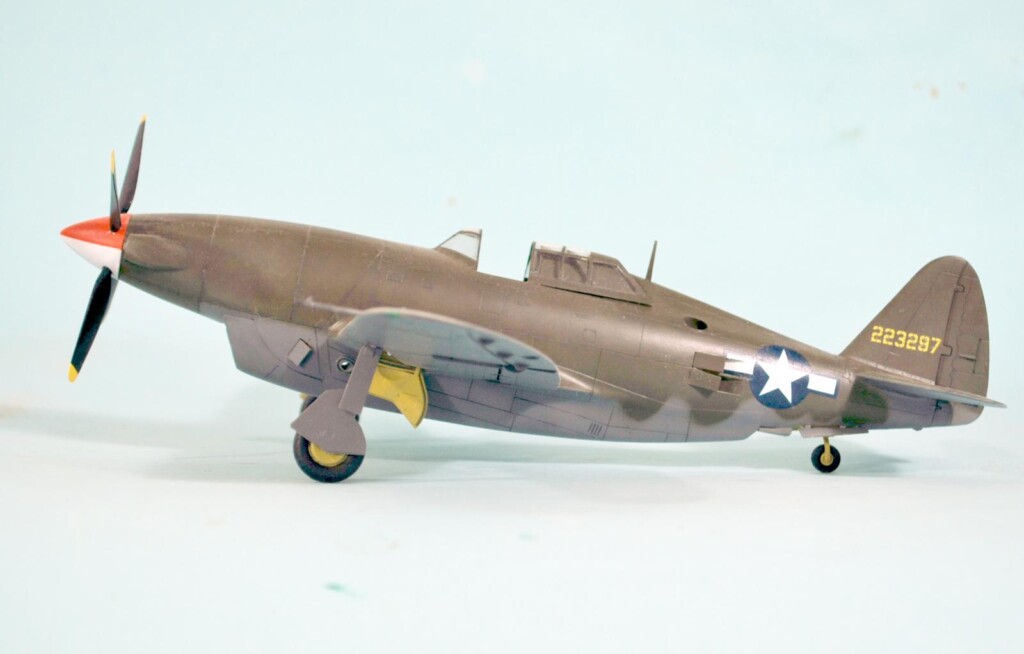
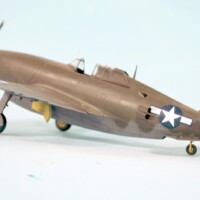
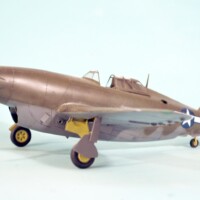
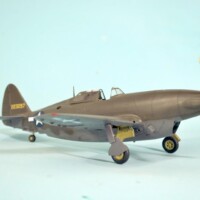
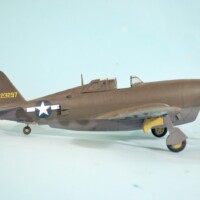
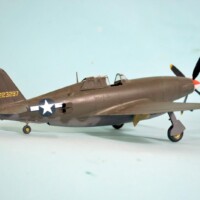
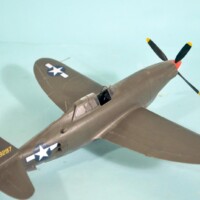
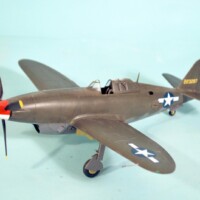
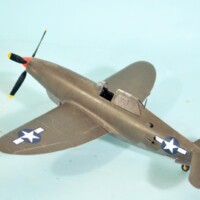
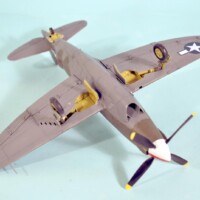
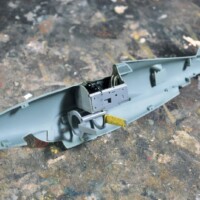
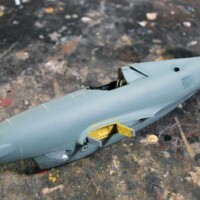
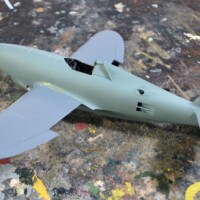
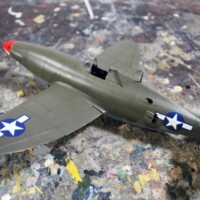
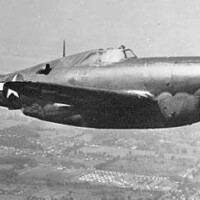
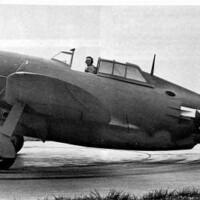

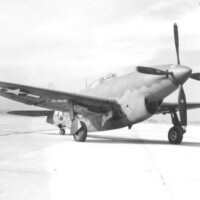
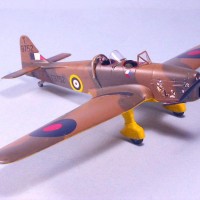
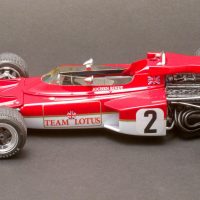
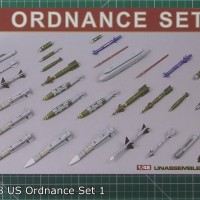
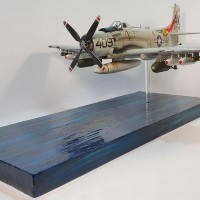
Another great model! That is a conversion I’d love to do. I have one of those 1/72 limited run kits somewhere in the stash. But this looks like a much better option. Thanks for the inspiration!
That is really awesome and what an ugly brute. Are you sure it wasn't designed by a French designer?
It is a monster, that's for sure.
Very interesting build
A great result on this exceptional looking P47, Tom @tcinla
Great work Tom, @tcinla. I saw a review of the Halberd models XP-72 and now your review of the XP-47H. Both look like they are exemplary kits and fairly easy conversions. I would really like to get both, your build is very inspirational and I am a lover of all things P-47. Thanks for building this, I think your build may end up causing be to get both the P-47H and the XP-72. Thanks.
XP-72 gets reviewed next week.
I look forward to it!
Well done, Tom.
Another great result on an oddball plane, Tom. Very cool.
"He was kinda funny lookin'" "Funny lookin' how?" "Oh, you know just funny lookin'"
Nicely built model, however.
Absolutely fabulous, Tom!
A beautifully built conversion, of one of the ugliest Thunderbolts ever built.
Looks like a beast! great work on this, I enjoyed the write up as well
What an ungainly chunk of an aircraft! Interesting article, Tom @tcinla. Good looking model, too.
Really beautiful, Tom. The P-47 was BIG to start with...that thing is a MONSTER!
Excellent! I just finished mine last night - agreed, this is a great conversion kit - Halberd rocks!
TF-51D coming soon.
Cool!
Very cool and interesting subject done well. I wonder what the fuel consumption and damage survivability would have been compared to the P&W engine versions.
Great history lesson as always, and a really outstanding model of a historically significant airplane. The engineering and development that Chrysler put into the XIV-2220 engine is where they got there hemisphereical combustion chamber cylinder head design for the soon to be developed HEMI automobile engine. We all know how that turned out.
That I didn't know, Cling @curtisshawk. Thanks!
G’day Tom (@tcinla),
This is a sharp looking aircraft (literally and figuratively).
With that extended nose, it is surprising that they didn’t increase the vertical tail area or length to maintain directional stability.
It certainly made a big aircraft bigger.
Liked!
Nice job,Tom. Take off and landing vision had to be frightening with that long nose.
Well - that's one of the ugliest aircraft designed! However, you definitely did it justice! Well done.